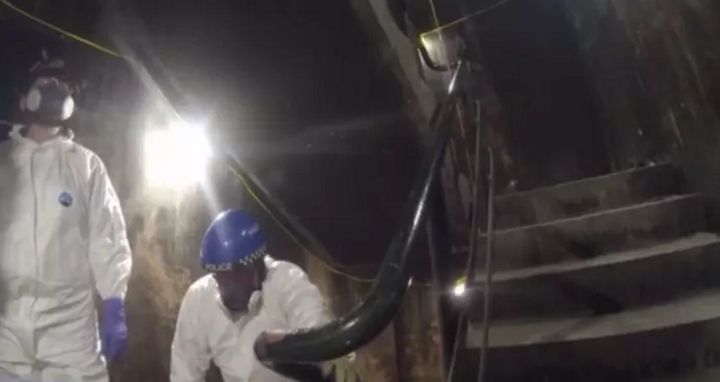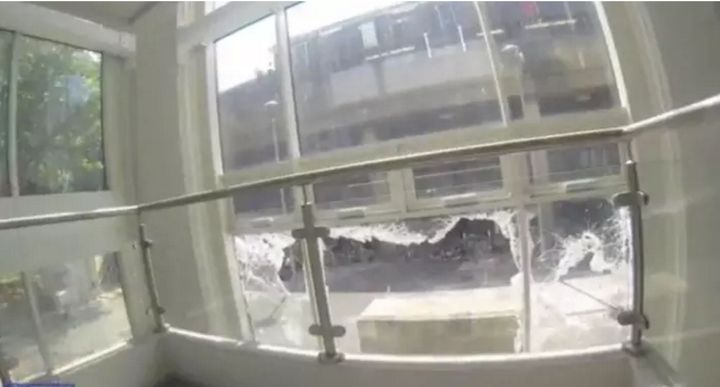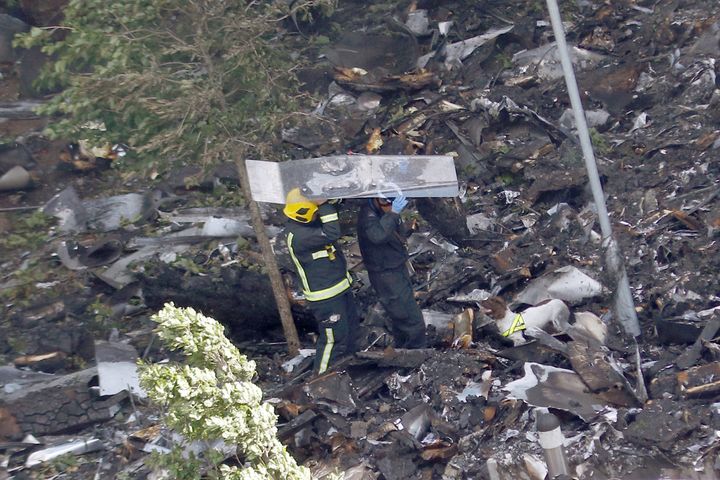As the controversy surrounding the death-toll from the Grenfell Tower blaze continues, the officer leading the search of the charred wreckage has described the painstaking task of sieving tonnes of debris down to six millimeters to ensure fragments of bone, teeth and body parts aren’t missed.
Sergeant Alistair Hutchins, who is the head of a team of disaster victim identification (DVI) – volunteers whose job it is to recover the bodies of those who perished in the June 14 fire, spoke out four weeks after the tragedy that claimed at least 80 lives.
The interview also came as the Metropolitan Police released video from inside the wreckage showing officers combing the Kensington tower whose destruction has led to a national inquiry.
Hutchins detailed the 24 storeys of horror facing his team who expect to be at the scene for another four months, “but clearly as we get to the more challenging areas certain tasks become more difficult and that may slightly increase”.

“I understand how frustrating it is for people outside of this environment to sit there and wait and say, ‘Why can’t I have my family back? Surely it is easy?’ But it is not,” he explained in an interview.
“It is a very time-consuming process but it is a very thorough process that ensures the right people are given back (to their families) and that is fundamental.”
Archaeologists have been tasked, Hutchins said, with taking away tiny pieces of debris as small as 6mm for inspection to ensure nothing is missed amongst the estimated 15.5 tonnes of debris per floor.
Police have made 87 “recoveries” from the tower, but have stressed “the catastrophic damage inside Grenfell Tower means that is not 87 people” - only 33 people have been officially identified. The death toll, despite fears that up to a hundred-or-more people perished in the disaster, remains at 80 where police believe it is likely to stay.

Hutchins said the recovery mission was the worst incident he has dealt with in almost 20 years and would take a huge emotional toll on all involved.
“The pressure it puts on you emotionally is huge,” he said.
“The DVI team are all volunteers and to ask them to enter a building like this and deal with the stuff they are finding is a big task for them.
“So it’s difficult, it’s probably the worst incident that I have ever dealt with and I have been doing DVI for 18 years. I have dealt with many incidents and I have never come across one harder both emotionally, physically and challenging.”
Hutchins explained the painstakingly detailed process of searching the tower, saying, at first, investigators gathered up any visible remains. Police dogs were then used to highlight anything they missed, and access any areas, due to structural damage, that were unsafe for them to enter.
A fingertip search of the building was then undertaken with teams inching through the charred remains and sieving through debris to remove tiny items - a process that is ongoing.

“The sieves go down to 6mm so that we guarantee we can pick up small fragments of bone, teeth, and any identifiable part of the human body we can pick up at that stage,” Hutchins said.
“All the debris from that flat is then packaged and is kept to one side and is marked with the floor number and the flat number so we can identify those bags. Then once we have cleared that flat, we then move on to the next flat and the process is repeated again until we have cleared every single flat in this tower block.”
Hutchins leads a team of 12 DVI officers, 24 search trained officers and six archaeologists. Due to the dangers of asbestos, officers are forced to wear protective and respiratory equipment. Due to the risks of heat exhaustion and dehydration they can’t work for more than a few hours at a time.
“They are all volunteers and they don’t get any extra money as a police officer to do this and they come back again and again,” Hutchins said of the team, who he said were “extremely passionate”.
“We believe in dignity in death, we believe in repatriating loved ones to their family members as fast as we can but also we believe in adhering to a safe system of work and an identification process that is going to ensure that the right person gets bought back to their loved ones.”
Hutchins was one of the first to enter the building while it was still ablaze, alongside Phillip Stone, the Met’s DVI coordinator, and during the interview he detailed the “incredibly difficult” task they initially faced.

“(There were) no lights so we had to use head torches, hoses everywhere. Fire equipment everywhere with fire-fighters still fighting fires up higher, smoke conditions, the heat, water pouring down the stairwells…
“If you imagine walking through a waterfall it will give you an idea, with the waterfall being hot - those are the conditions we were working through initially.”
Hutchins called for people to be “patient” but said he sympathised with those affected by the blaze and those calling for authorities to be more forthright with details of the recovery operation.
“I deeply, deeply understand the frustration the families have and the answers they want and it is only natural,” he said.
“All I can say is please be patient. We are doing our upmost best for you and we are working as hard as we can.
“I have no doubt that we will have an extremely emotional moment when we are finally given the all clear.”
This evening a vigil will be held in the shadow of the tower block, the first of several commemorations expected as the one-month anniversary approaches.
Mourners will gather around a wall of handwritten tributes which sprung up after the fire and has since sprawled around several streets in the west London neighbourhood.
Earlier on Wednesday, inquests are expected to be opened for more of the victims at Westminster Coroner’s Court.
The officer leading the investigation into the tower blaze released a statement on Wednesday saying the human cost of the blaze is “something we are still trying to fully comprehend.
Commander Stuart Cundy said: “Each and every one of us involved from the Met is determined to do all we can to return those who died to their families as soon as we can.
“Today, we remember all those who have been so deeply affected.”
“As we all reflect upon what happened my thoughts, and those of all of us in the Met, are with those who lost their loved ones, their homes and a community that is in mourning.
“Four weeks ago a terrible tragedy unfolded within Grenfell Tower.
“The human cost of that tragedy is something we are all still trying to fully comprehend.
“For many people the events of that night will remain with them forever.”

